Several decades ago I traveled by ship across the Atlantic from Southampton, UK to New York. I was an immigrant. Like other immigrants, I was nervous, anxious and yes, I was frightened. I had never been to the States and the one and only person I knew, the one who had guaranteed that I would never be reliant on the welfare state, lived in California.
Like other immigrants to this country, I came to find opportunity, adventure and a life that better suited me than England offered at the time. As the Statue of Liberty came into view, I felt the same rush of emotion as surely many others had before me.
This grand lady standing about 150 feet above the harbor, a gift from France in 1886 has welcomed literally millions of immigrants from all over the world, but mainly from Europe.
Clutched to my chest in a large envelope were my X-rays (to show I did not have tuberculosis), police records (indicating I had no crime record) and other official documents. Unlike those twelve million immigrants who passed this way between 1892 and 1954, I did not have to stop at Ellis Island to be processed.
The Immigrant Inspection Station was the very first introduction to America for these non English speaking, often illiterate people, exhausted from days at sea under stressful situations.
Packed as they were into confined spaces, sanitation minimal, and sea sickness prevalent, many arrived shaken and bewildered as they entered the big hall clutching the few possessions they were able to carry.
Like so many visitors before me, I am fascinated to learn more about this historical place that played a part in the lives of millions of families. My husband’s grand parents, Eidel Gendelman and Joseph Bookman (Anglo adaptation) came through this great hall as Russian Jews in 1905. How, in retrospect, I wish I had taken the time to speak with Ida as she was known, back in the seventies, before she passed away.
Listening to the audio tour, we are informed that as new arrivals entered the building and climbed the stairs to the reception hall, health inspectors stood by and eyed each one and made a quick assessment as to whether they should be singled out for further health examination.
Was Ida one of those 10% taken away for further medical examination? Did she have to fit pieces of wood in a puzzle to show she was mentally competent? Did she have some health issues that meant she had to go across the water to the hospital buildings for further examination and hospital stay? Regardless, she must have been frightened, speaking only Yiddish and arriving entirely alone.
Those who had to remain in the building while a family member was recovering in the hospital ward, slept in confined conditions, but were fed three meals a day. Interestingly enough, these meals had to be paid for by the shipping company that brought the immigrants to American shores. The dining room was able to seat 1,000 diners at a time!

Dormitory room. An immigrant from Britain recalls that it was best to secure a lower bunk since there were no stools or other aids for reaching the top bunks!
Most of those entering Ellis Island were quickly processed and helped to either get tickets for trains to their destination or went down another staircase to be greeted by waiting family members. Fathers were reunited with their wife and children; mail order brides were greeted by husbands-to-be.
Not everyone got to stay. If the authorities determined someone was of ill repute, indigent or of ill health, they were sent down another staircase and put on a ship to be returned home. The audio tour introduces us to a woman who speaks of her arrival on Ellis Island as a child with her entire family from Eastern Europe and it was determined by the health inspectors that the grandmother was not of strong enough health to enter the country. She was sent back, alone. The family never saw nor heard from her again.
Families traveled with their most treasured possessions. These often included the family Bible, costume of their native land and perhaps something belonging to a loved one left behind.
Many immigrants did not travel far once they left the island. Not knowing the language, they moved to communities where fellow countrymen were already established. One of these areas was the Lower East Side of New York where there were hundreds of tenement buildings packed in close together with six or more stories of tiny little apartments, each one housing a family.
Life was very hard for these new immigrants at the turn of the century with no heat, no running water and no light except what came through two small windows in the front of the building. At 97 Orchard Street a tenement house has been preserved just as it was left in 1935. Built in 1863, it saw sixty years of uninterrupted occupancy. The Census report for 1900 shows 111 people living in this one building.
Thousands of these buildings were constructed as immigrants poured into the city. To maximize rents, as many as twenty families were housed in tiny apartments, less than 400 sq.ft (the size of a double car garage.) 97 Orchard Street had four apartments on each of its five floors – 2o apartments in all. As stricter immigration laws were enacted and fewer immigrants arrived, occupancy decreased until it was easier to close up the upper floors and simply rent out retail space on ground level, leaving this building stuck in time, and perfect for what became the Tenement Museum.
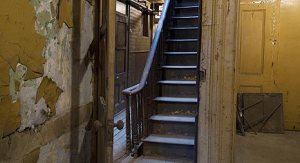
Staircase used by everyone living in the apartments above. Everyone would have to come down these stairs to use the outside toilets and to get water from common spigot
It was around 1988 when the interior of this building was discovered. It was found to be completely untouched with tin pressed ceilings, oil paintings darkened with soot from coal fired stoves and the original well worn staircase leading upstairs to the apartments. Even the old toilets were still standing in the yard.
The apartments consisted of just one very small back bedroom, a kitchen and the front room where the family lived and often worked. Most of these inhabitants were poor and unskilled and survived by doing piece meal sewing of clothes.
One can only imagine the noise with sewing machines whirling, scissors snipping, pressers thumping their irons, chatter, children running everywhere and this going on in twenty different apartments.
Outside on the streets, crowds of vendors shouting their wares, shoppers and people simply milling about added to the noise.
It was indeed not the life these immigrants had expected. America had promised more. But with time and hard work, most of the immigrants who came through Ellis Island, who moved to Orchard Street and other Lower East Side neighborhoods did do well enough to move away and today their children and grandchildren can look back with pride on their heritage.

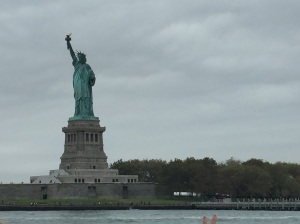

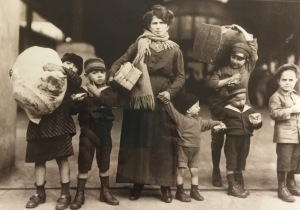
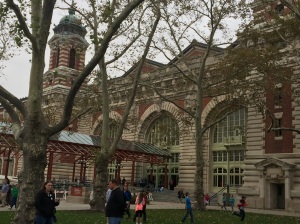
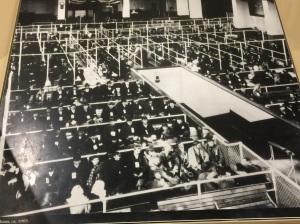


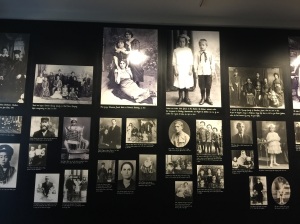
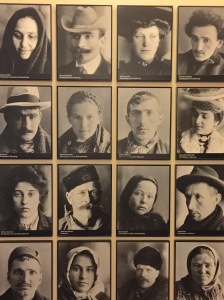
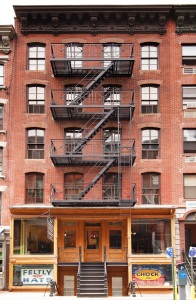



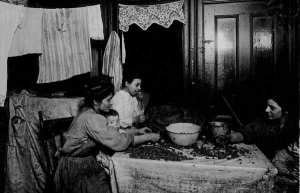
Quite fascinating, and you gave it such a lovely smooth flow of storytelling…
>
LikeLike
Thank you! Learning about these early arrivals to the US made a huge impact on me…
LikeLike
This is well done . I love how you weaved your own family’s experience into your continued travelogue about the statue and Tenement Museum. So cool – I visited the Tenement Museum too and was surprised how rewarding it was.
LikeLike